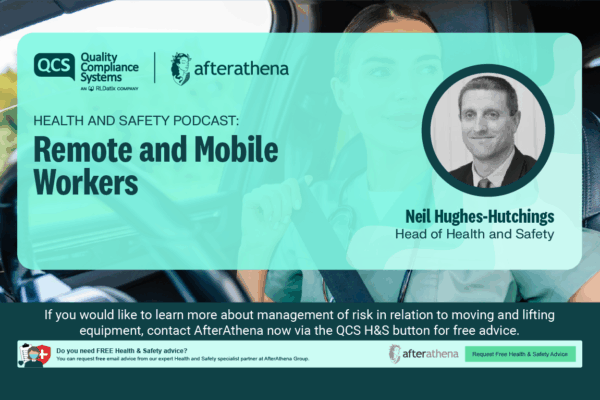
Infection Control Management – legislative requirements
Infection Control Management within a healthcare environment or other business sector needs to be part of the employers’ overall aim of ensuring that they provide a safe working environment for personnel and others (contractors, visitors etc.) affected by the work undertaken. Section 2 (1) of the Health and Safety at Work etc. Act 1974 requires the employer to ensure the health, safety and welfare of employees at work is managed.
Some other legislation relating to Infection Control Management includes:
- Reporting of Injuries, Diseases and Dangerous Occurrences (RIDDOR) 2013
- The Public Health (Control of Diseases) Act 1984
- The Public Health (Infectious Diseases) Regulations 1988
- The Management of Health and Safety at Work (Amendment) Regulations 2006
- Control of Substances Hazardous to Health (COSHH) 2002
- The Food Safety and Hygiene (England) Regulations 2013
- Food Safety Act 1990
- The Health Protection (Notification) Regulations 2010
Infection control policy
The starting point with infection control is developing an infection control policy. The policy must be based on work activities in the work environment, taking into account personnel and others within the environment. The infection control policy must be realistic and practical to ensure its suitable implementation in the work setting. It should be clear and structured. It should not be vague and open to interpretation through differing opinions, so that the personnel know what is expected of them in ensuring that it is implemented.
The infection control policy needs to be live and reviewed where necessary as changes occur through new imported risk challenges within the workplace. Imported risk can range from personnel or other visitors such as contractors coming into the workplace with an infectious disease. It may be a case of a local outbreak of vomiting and diarrhoea spreading, or an epidemic or pandemic outbreak at international level that may potentially have an impact at local level.
Infection control policy – risk assessment
The policy should include a requirement that the healthcare service/business assess infection control risks through developing and recording an infection control risk assessment.
Infection control risk assessment – legislative requirements
The legislation that covers the requirement to carry out a risk assessments is:
The Management of Health and Safety at Work (Amendment) Regulations 2006: Regulation 3 states that every employer shall make a suitable and sufficient assessment of –
- the risks to the health and safety of his employees to which they are exposed whilst they are at work; and
- the risks to the health and safety of persons not in his employment arising out of or in connection with the conduct by him of his undertaking
Infection control risk assessment
An infection control risk assessment must be carried out to assess infection hazards and risks and ensure that, where possible, infection risks are eliminated, reduced, contained and managed appropriately. The infection control risk assessment will identify particular tasks that may carry the risk of contamination or the spread of disease.
The infection control risk assessment will need to:
- Identify the hazards within the workplace, including those that potentially may be brought into the workplace.
- Decide who might be harmed, and how, and include visitors, contractors, vulnerable persons, registered disabled persons, pregnant women, young persons, children, elderly and those persons with medical issues.
- Evaluate the risks and decide on precautions through ratings such as low, medium or high risk. The precautions and controls put in place must be proportionate to the risks. An example is if the risk is high then more robust controls may need to be put in place to reduce the risk to an acceptable level.
- Record the significant findings of the risk assessment and communicate it to all relevant persons. The law requires that the employer provide employees with adequate information, training and supervision necessary to ensure their health and safety at work. Ensuring personnel understand the contents of the risk assessment and the role that they will take in managing any risk can be achieved through training. The type of training will depend on the individual, the sector in which they work and the tasks/work activities that they are require to perform.
- Review the assessment and update when changes are required. Changes may be required following the identification of new or imported infection control risks into the healthcare service.
Infection control policy and Personal Protective Equipment (PPE)
The infection control policy will outline what Personal Protective Equipment (PPE) is required by personnel to use whilst undertaking their infection control duties.
The employer must provide and maintain any necessary PPE free of charge to personnel in order for personnel to carry out their duties in an effective manner. The type of PPE depends on the type of risk. If a person is cleaning a reception area with no indication of any pathogens being present, they will wear an apron and gloves whilst cleaning. However, if a person was cleaning an area where there had been a person with a contagious pathogen such as the Ebola Virus then they would wear complete coverage of skin from head to toe. The PPE would be specific based on the type of risks involved.
QCS Infection Control Policy
QCS can provide comprehensive infection control policies to meet your organisational needs. It is recommended that you ensure the policies are implemented into the work environment and personnel understand their role in preventing and controlling the spread of pathogenic microorganism causing infection.
References
http://www.legislation.gov.uk/uksi/2013/1471
http://www.legislation.gov.uk/ukpga/1984/22
http://www.legislation.gov.uk/uksi/1988/1546
http://www.legislation.gov.uk/uksi/2006/438
http://www.legislation.gov.uk/uksi/2002/2677
http://www.legislation.gov.uk/uksi/2013/2996
http://www.legislation.gov.uk/ukpga/1990/16
http://www.legislation.gov.uk/uksi/2010/659
http://www.legislation.gov.uk/ukpga/1974/37
http://www.legislation.gov.uk/uksi/2002/1144





